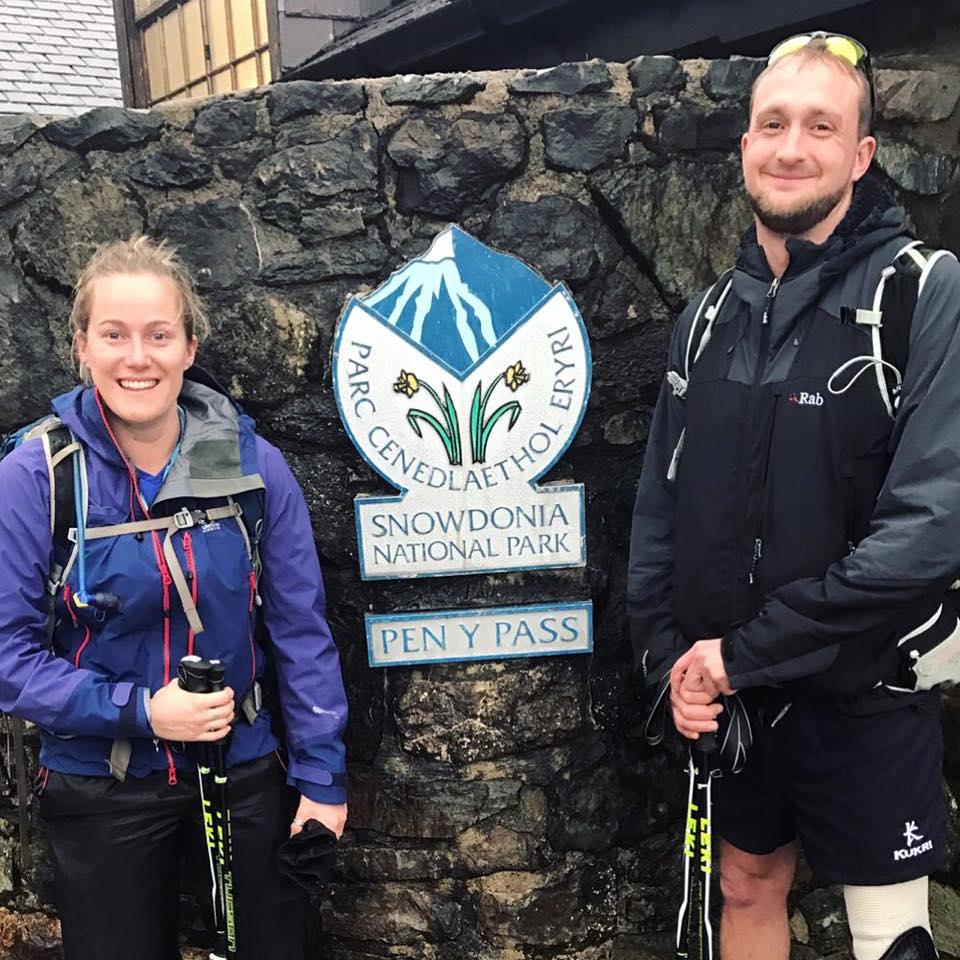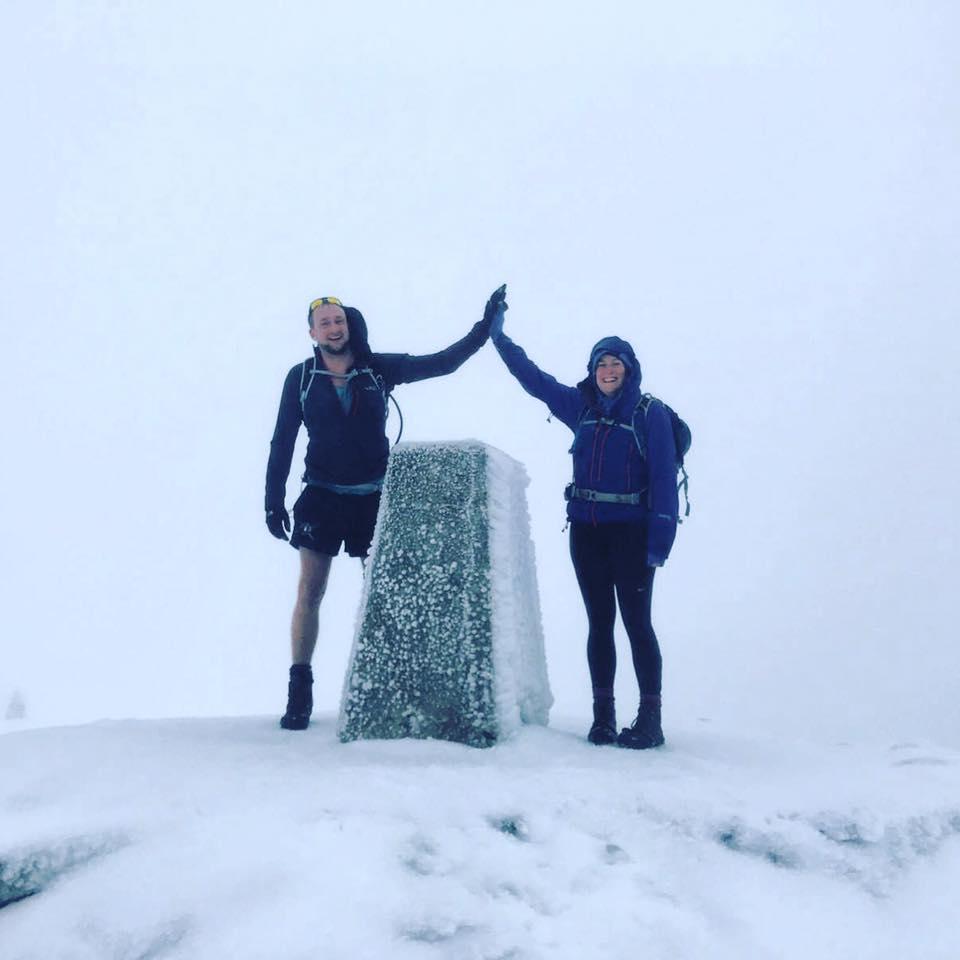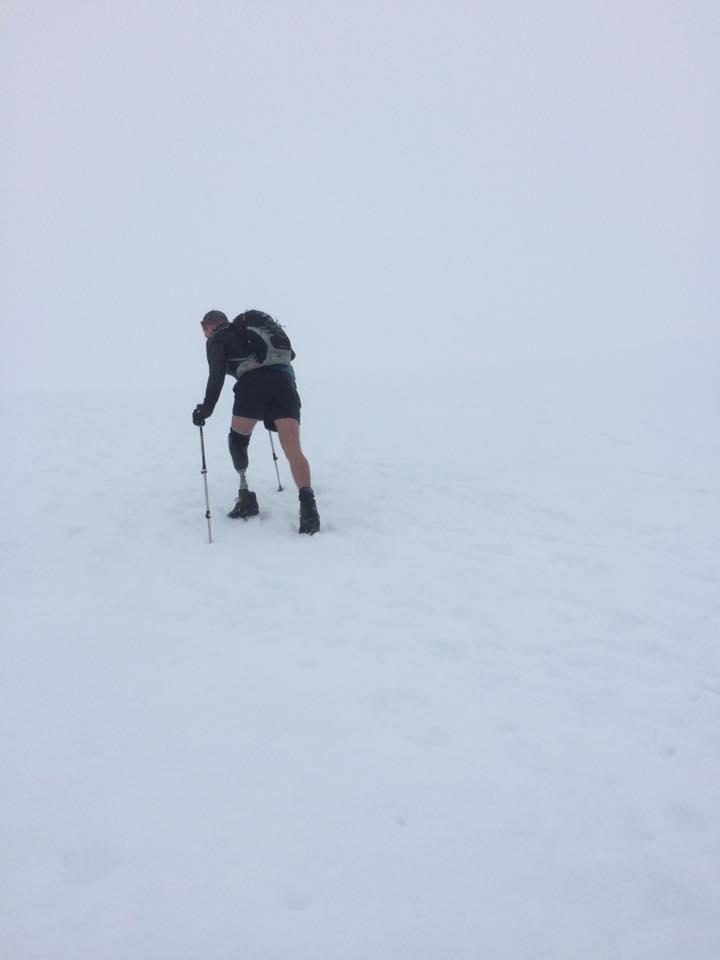A Special Three Peaks Challenge...
Posted by Jeremy Windsor on Jan 28, 2022
Last September's BMRES BMMS Science Day marked the return of face-to-face mountain medicine meetings in the UK. It was long overdue! Amongst the many excellent presentations, one really stood out for me. Anaesthetist Helen Blamey spoke brilliantly about completing the Three Peaks Challenge with her friend Jordan Beecher. What separated this from the attempts of others was the fact that Jordan had previously undergone a below knee amputation. Here’s Helen to tell us about the two of them and what they learnt along the way...
I was a keen rower, competing nationally and trialling for the international squad as an under 23 whilst at University in London studying for a geography degree. When I finished rowing, I went into coaching, and coached for the British Paralympic team for 4 years. I studied medicine as a graduate at King’s College London. I thought I was heading for sports medicine but instead found myself fascinated by anaesthetics and intensive care so am now on an ACCS-anaesthetics programme in the Thames Valley! Sport now features around the sides of my day job, and I’m working out how to blend some sports / mountain / altitude medicine into this – maybe less than full time (LTFT)? I remain involved with parasport classifying internationally for para-rowing, para-canoe, and para-bobsleigh/skeleton, and work for the Invictus Games Foundation managing their sports categorisation system.
Jordan was in the Army - in the Parachute Regiment – he was very fitness focussed and enjoyed being outdoors. He lost a leg in Afghanistan in 2012 during Operation Herrick when he stood on an IED during a patrol. He engaged with rehabilitation through the defence rehabilitation centre at Headley Court and got talent spotted for the GB Rowing Team which introduced him to para-sports (and where we met!). In 2016 he represented the UK at the Invictus Games and won 2 gold medals. Although he eventually left rowing and performance sport, he realised through this experience he could still be active and enjoy sport recreationally - and mountain walking was a large part of his pre-injury identity and his military adventure training. It was important for him to re-engage with this, and that’s how we came together to do the Three Peaks Challenge. He is now working in the civil service, and enjoys the outdoors in his free time.

The Three Peaks Challenge sets out to climb the 3 highest peaks in Great Britain - Ben Nevis, Snowdon and Scafell Pike - all in under 24 hours!
The Three Peaks Challenge was on Jordan’s ‘bucket list’ prior to his injury and it felt like a goal that was important to achieve – a personal challenge as opposed to a competition - and to see if he was able to do it as an amputee. The Three Peaks Challenge had not been attempted by an amputee before - at least as far as we knew! It was also a great opportunity to explore more of the country and push ourselves to the limits in a challenging environment (we did it in February when weather and day light was a challenge!)
Being a military amputee, Jordan had a greater choice of prosthesis than most as funding came from the Ministry of Defence. He was also able to get regular replacements if they became damaged.
He took one socket with two different attachments – a blade and a foot. He eventually chose to use just the foot because the blade attachment was too long on the uneven surface and with reduced surface area it resulted in less grip and stability. Despite being lighter, it simply wasn't practical. It’s also worth bearing in mind that the blade is longer than the foot attachment, as it is designed to compress when running, but when walking means that one ‘leg’ is longer than the other.

Most complete the Three Peaks Challenge in the summer months. Not Helen and Jordan, they chose to do it in February!
The foot allowed Jordan to match his shoes to the different terrain. This increased stability and purchase. The foot attachments weren't integrated into the socket so there was the ability to change ‘feet’. This meant that Jordan could not only change shoes but wear the same on both feet. "Yak Trax" snow grips were worn near the summit of Ben Nevis.
Information on the prosthesis Jordan used can be found here:
https://www.ossur.com/en-gb/prosthetics/feet/cheetah-xplore
Jordan used a sport specific ‘SilkAir’ liner to reduce rubbing against the prosthesis. This is porous and lets sweat out. He switched between this and a day-to-day liner (silicon, without holes) for comfort. The sport specific liner is tighter. Whilst this is better at releasing sweat than a day-to-day liner, it was slightly less comfortable. Switching between the two meant no area of the leg became overly sore.
It was very difficult to keep the stump dry. We needed to stop regularly to dry and change the liner. Some people use talcum powder or DryChlor preparations, but these tend to leave a residue and cause friction and skin irritation. There is some limited evidence that botox has been successfully used by the US military to reduce sweating.

Trekking poles were invaluable!
The colder it was, the less Jordan sweated, so there was less need to stop to dry the stump and change the liner. Although the prosthesis was waterproof, water leaked into the part of the liner where it extended beyond the prosthesis to the skin. This meant that when it rained there was a greater risk of friction developing that could result in skin breakdown. Temperature fluctuations also caused stump size fluctuations. It shrunk with the cold and expanded with the heat. We were mostly cold! Therefore we could compensate by using an extra ‘stump sock’ over the liner in order to tighten the fit.
Walking poles were very useful. They added stability and offloaded weight. We both found them helpful with climbing on the way up and down, as well as providing balance on uneven flat ground.
Jordan had a good idea of where he placed his prosthesis. After all he'd had a foot for 24 years! But there were times when this was difficult. In the dark, head torches helped a lot. River crossings were the most challenging as it was simply impossible to see the bottom of the river bed and safely weight his prosthesis.

Wearing shorts made it much easier to attach and remove the prosthesis
Fatigue was also a problem. Jordan was not used to activity of this duration. Balancing rest and recovery with driving between the locations also represented a big challenge! It's worth saying that the distance between the 3 peaks is just under 500 miles and much of this was done in the dark.
Jordan’s body surface area was reduced by the amputation. As a result, he sometimes struggled to regulate his body temperature and would be prone to "over heating". Sweat collected in the liner and between the liner and skin, requiring frequent stops to mop sweat and replace liners in order to prevent skin damage.
Walking downhill with a prosthesis was also very challenging. The ankle joint of most prostheses is fixed and therefore unable to plantar or dorsiflex. According to Jordan the hardest part of the Three Peaks Challenge was descending Snowdon, "narrow sloping steps. As my ankle joint can't adjust I felt very unstable ... we stopped a LOT during this. Very cold, very wet and very dark - it was emotional!"
Nevertheless, they did it!
Congratulations to Helen and Jordan!
Thanks Helen for speaking to me!
Comments
Leave a comment.



 )
)